Lazy jacquard is an original technique for decorating various clothes. When knitting, it is recommended to familiarize yourself with the features and principles of creating products. There are a large number of different knitting patterns in this way.
Necessary tools and materials
Lazy jacquard knitting (the diagram with the description is given for the purpose of familiarization with the features of the method) is a unique knitting technique that helps to create beautiful ornaments and patterns on clothes.
In this case, no auxiliary tools are required for the work, and the method does not include complex shifting of loops. To create an ornament, it is necessary to combine different shades of thread material so that the pattern turns out expressive and bright.
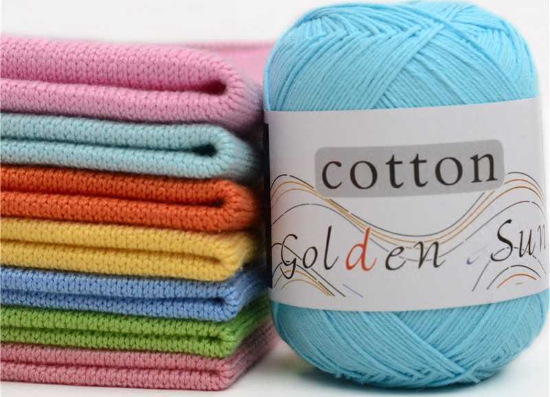
When choosing yarn, it is worth giving preference to material with a thin or medium thickness. Due to this, the ornament will be more neat and clear. Thread material made of natural fibers is suitable for knitting.
For example, it is acceptable to use alpaca, cotton or wool to make the clothing comfortable and have good thermal insulation.
The shades of the thread material should match each other to create a beautiful contrast. For these purposes, it is best to use threads of the same brand. In this case, the shades will be compatible with each other.
Selecting knitting needles:
| Product and ornament | Tool size |
| Mittens | 2 mm |
| Socks | 3 mm |
| Rhombuses | 2.5 mm |
| Footprints | 3.75 mm |
Schemes with description of works for beginners
Lazy jacquard is suitable for those who have no experience in knitting. Thanks to simple patterns with detailed descriptions, you can make beautiful ornaments without getting confused in the change of shades that will alternate every 1-2 rows.
In this case, some elements of the pattern need to be knitted with stretching.
Socks
Lazy jacquard knitting (the pattern consists of simple elements) allows you to knit warm socks. The product turns out beautiful and festive, so it can be used as a gift.
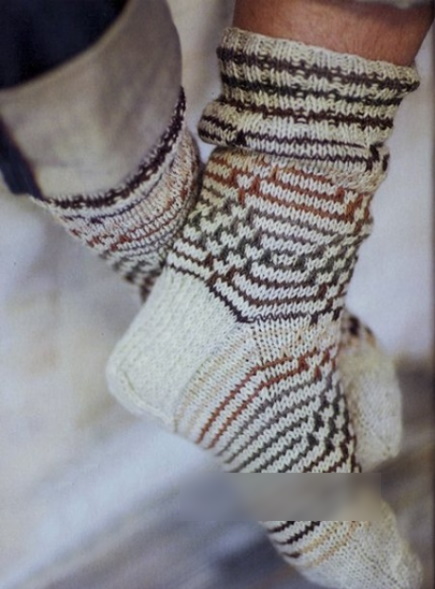 | 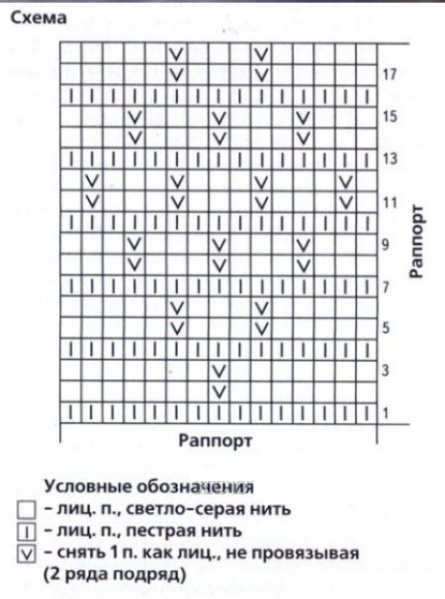 |
Knitting pattern with description:
- Cast on 80 stitches. Then distribute the knitted elements equally across 4 knitting needles. Use white yarn for knitting.
- Create 2 rows with 1x1 elastic. Then make the next row with the front surface.
- Add red yarn to the fabric to create the future pattern.
- On each knitting needle, decrease 1 element. To decrease the number of loops, knit 2 elements together.
- When there are 19 loops left on the knitting tools, create a strip using white thread material. Then decrease the elements so that their number is equal to 18.
- After creating a strip of white shade, proceed to the design of the further pattern according to the initial scheme. When knitting 64 elements, you can move on to the design of the heel.

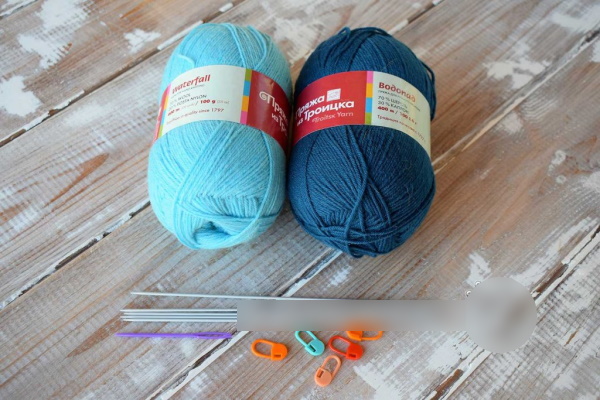
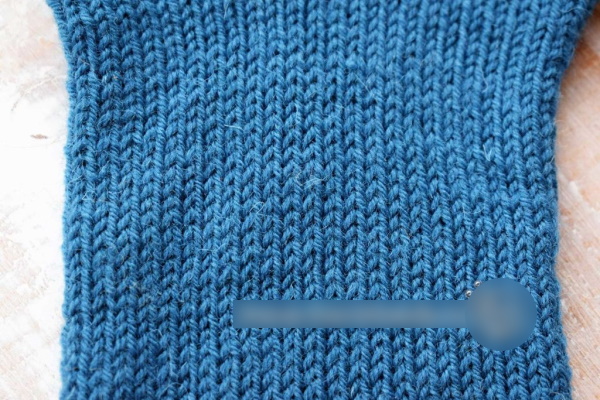

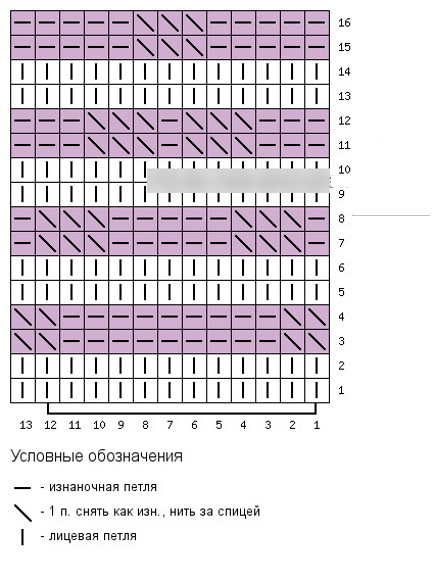
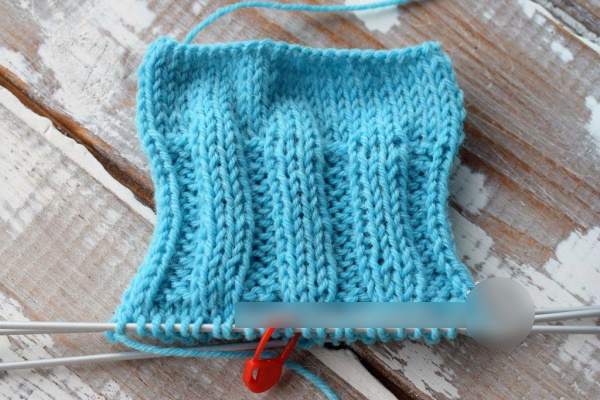
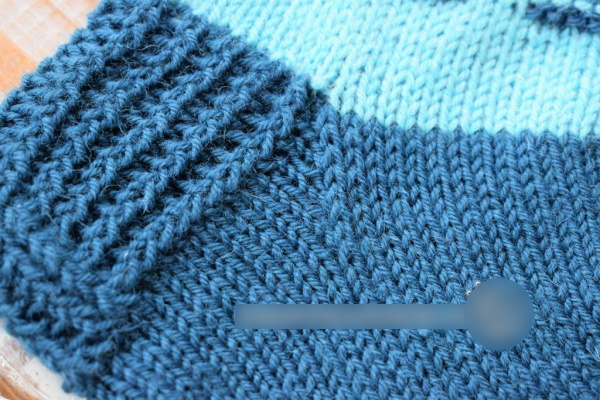
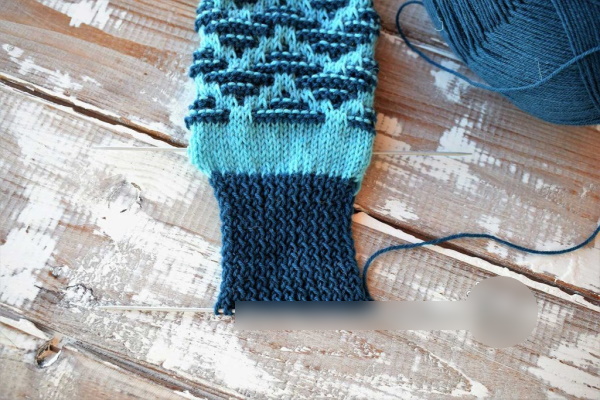
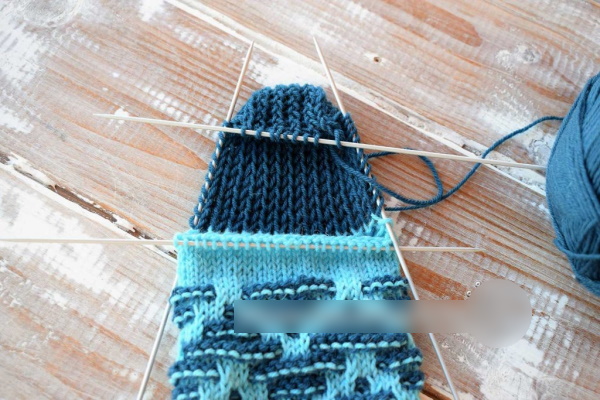
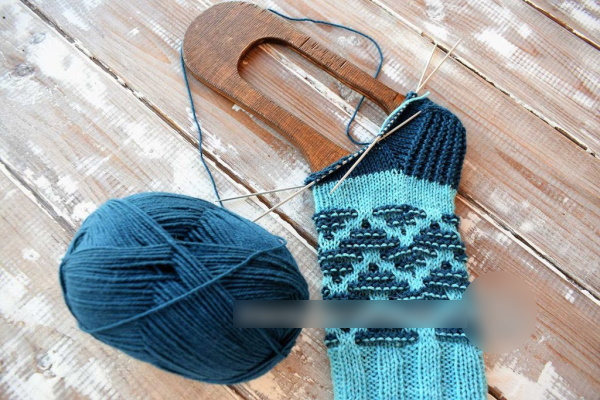

- After creating the heel, divide the product into 3 parts. As a result, 10, 12, 10 elements should remain on 3 knitting needles. This helps to knit a smooth transition.
- Cast on loops on 4 knitting tool. As a result, there should be 6 elements on each knitting needle.
- Smoothly decrease the stitches until the design of the product is completely completed.
- To close the golf, knit 2 loops together so that only 1 element remains.
- Pull the thread material together and secure it.
Slippers-footprints
Lazy jacquard with knitting needles (the diagram will tell you how to knit the product correctly) allows you to create a practical thing for the home. To keep the footprints warm, it is better to use yarn that contains wool.

To decorate a colored product, it is recommended to use 2 shades of thread material, for example, gray and pink.
Step-by-step description of the work:
- Using grey yarn, make a set of 53 loops.
- The first 2 rows are made with a rib. To do this, in the 1st row, initially remove the element. Then from the beginning to the end of the row, knit with alternating 1 purl and 1 front loop. At the end of the row, make 2 purl elements.
- In the 2nd row, first remove the element, then knit 1 front and 1 back element to the end of the row. Alternate the loops.
- Then, using grey thread material, make the next 8 rows in the same way as in rows 1 and 2.

- Change the yarn shade to pink, continue knitting with a rib pattern. Create 2 new lines.
- Change the color of the thread material again and knit 6 rows.
- Then make 2 rows with pink yarn. Change the shade and make 8 new rows with a rubber band. As a result, 26 rows should be created.
- Then follow the pattern, creating a 12-line design. Leave the thread material and select 17 central elements.
- Fix the yarn to the central elements to knit 10 cm of the pattern.
- In the last row from the wrong side, make all elements face. For this, the yarn should be gray. To continue knitting the fingers, use only this shade of thread material.
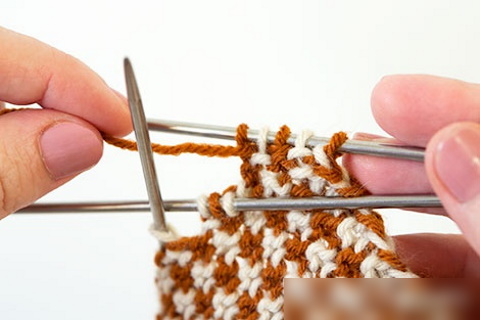

- In the next 6 rows, first remove the loop, and then follow the pattern.
- In 1 row make 2 together front loops to the right side, 11 front and 2 together front elements to the left side. At the end of the row knit 1 back loop.
- In the 2nd row, until the end of the row, all loops should be front loops. The outer element should be purl.
- The 3rd row consists of 2 together knit stitches (to the right side), 9 knit stitches, 2 together knit stitches (to the left side) and 1 purl stitch.
- In the 4th row from the beginning to the end all elements should be knit. The outer loop should be purl.
- Row 5 includes 2 knit together (to the right side), 7 knit, 2 knit together (to the left side) and 1 purl loop.
- In row 6, knit the front elements to the end. Make the last loop purl.
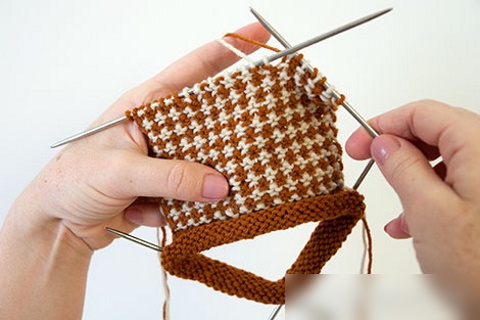

- Shorten the thread material. Then you can return to the yarn that was put aside.
- To form the foot, make a new row with gray yarn. After removing the element, knit 17 front loops. Raise 18 elements and knit 11 front loops. Raise the same number of elements again. Then make 17 front and 1 back loop.
- Using the garter stitch technique, create 3 more rows. Then, using pink yarn, create 2 rows and change the shade of the thread material to gray to create 4 more rows. As a result, 10 rows of garter stitch pattern should be created.
- To create the sole in the next 10 rows, first remove 1 element at a time.
- Row 1 consists of 2 together knits, 31 knits, *2 together knits, 4 knits* (repeat twice), 2 together knits, 32 knits, 2 together knits and 1 purl.
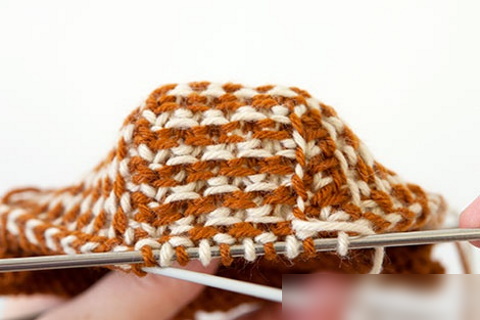
- In the 2nd row, knit all elements. The outer loop should be purl.
- Row 3 includes 2 together knit stitches, 30 knit stitches, *2 together knit stitches, 3 knit stitches* (knit 2 times), 2 together knit stitches, 30 knit stitches, 2 together knit stitches and 1 purl stitch.
- In the 4th row, make only the front elements. The last loop should be a purl.
- Row 5 consists of 2 together knits, 29 knits, *2 together knits, 2 knits* (repeat twice), 2 together knits, 28 knits, 2 together knits and 1 purl element.
- Rows 6 and 8 are knitted with front loops, but the last element should be purl.
- Row 7 consists of 2 together knits, 27 knits, 2 together knits, 1 knit, 2 together knits, 27 knits, 2 together knits and 1 purl elements.
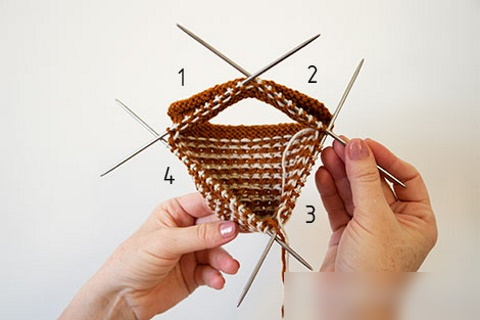
- In the 9th row, make 2 together knit stitches, 25 knit stitches, *2 together knit stitches* (repeat three times), 26 knit stitches, 2 together knit stitches and 1 purl stitch.
- In row 10, knit 28 front elements.
- Cut off the thread material, leaving a long piece.
- Close the loops together to make it easier to sew the back seam.
Mittens
Lazy jacquard knitting needles (a diagram with a detailed description will allow you to create a beautiful and practical thing) is suitable for knitting mittens, which are characterized by a light ornament. The thread material can be any, but the thickness should be the same.

Scheme with description of work:
- Decorate rows 1-3 with one shade, rows 4-6 with another.
- The pattern rapport for the right mitten consists of 3 loops. To create the cuff, make a set of 61 elements. Evenly distribute the resulting loops over 4 knitting needles and close in a circle.
- Swap the 2 outer elements, making a drawstring. Knit a 2x2 elastic band on 60 loops. As a result, the cuff width should be at least 5 cm.
- After in the 1st row, knit with the front surface, adding 6 elements. There should be 66 elements on the knitting tools.
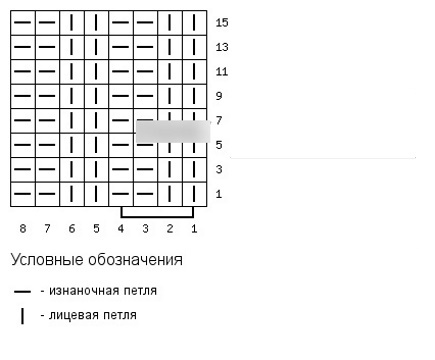

- Row 2 consists of knit stitches.
- In rows 3 and 6 make a *front element, then insert the right knitting needle into the loop, make 2 turns and knit as usual. Then make a front element* (repeat 21 times).
- In rows 4-5, until the end of the row, knit alternating 1 front, 1 slipped without knitting and 1 front element.
- Repeat the pattern so that it is 7 cm from the edge of the cuff. To check the distance from the edge of the cuff to the base of the thumb, place the product on your hand.
- In the next row, make 2 front elements, after 7 loops, transfer to a pin and again dial the same number of elements.

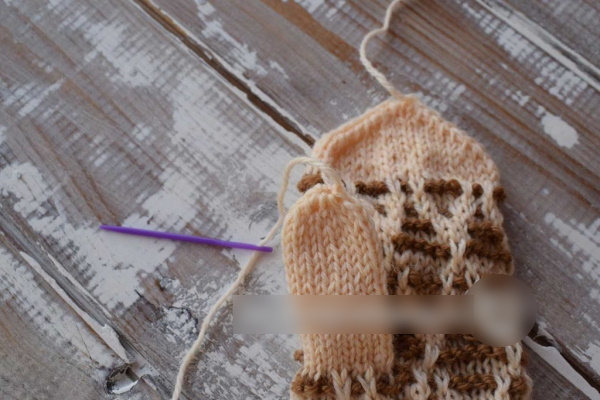
- To the edge of the little finger, decorate the product with lazy jacquard. To close the top, knit 2 loops together in each row, making tilts to the right and left.
- The left mitten is designed in the same way as the right piece up to the line where the finger slit is located. Having reached this row, make 24 elements with lazy jacquard and throw 7 loops onto a pin.
- Then knit 7 and 2 front loops. Until the end of the line, decorate the elements with jacquard.
- The closure of the top of the left mitten coincides with the closure of the right product.
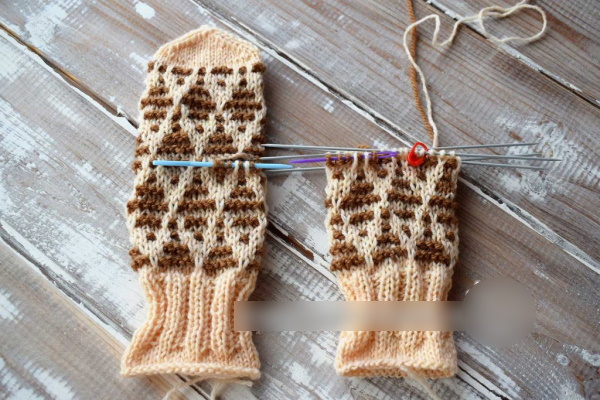
- To form the finger, knit 7 elements from the pin onto the knitting tool. Cast on the same number of loops onto the second needle. Pick up 1 element from each gap.
- Divide the resulting 16 loops into 3 tools, continuing to work to the center of the fingernail.
- Then close the top by knitting the elements in 2 rows of 2 together. Tighten the remaining loops.
Rhombuses
Lazy jacquard in the form of diamonds is a classic example of colorful ornaments that can be used to create sweaters, socks, sweaters. At the same time, this pattern is suitable for adult and children's clothes.
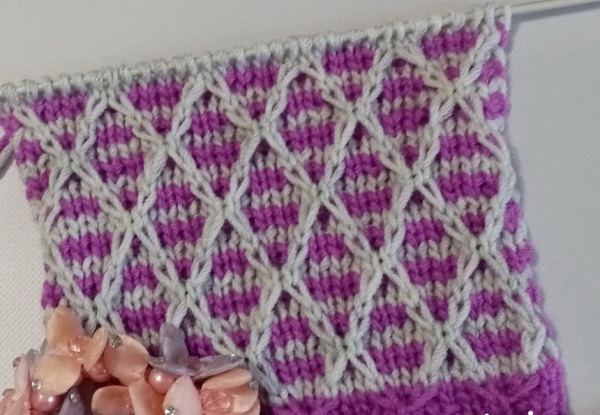
Explanation of abbreviations:
- СНЗА – as in purl knitting, when transferring a loop to the right knitting tool, pass the yarn behind the element;
- SNFRONT - when transferring a loop, pass the thread material in front of the element;
- * – the selected fragment must be repeated 2 times.
Step-by-step description of the work:
- Knit 15 elements, where 12 loops are needed for 2 rapports, 1 for symmetry, 2 for edge loops.
- Rows 1, 2, 5, 6, 9, 10, 13, 14, 17, 18, 21, 22, 25, 26, as well as rows 29 and 30, should be decorated with one shade, and the remaining rows with another.
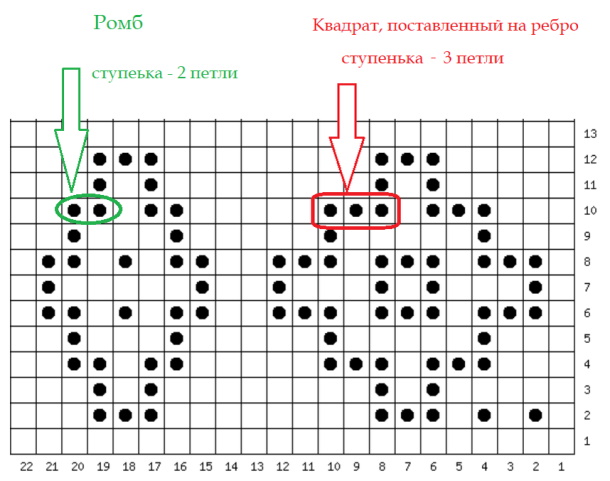
- Start and end all rows with an edge loop.
- 1 row consists of *6 front* and 1 front elements.
- Row 2 includes 13 purl stitches.
- In the 3rd row, make *3 knit stitches, SNZA, 2 knit stitches* and a knit stitch.
- Row 4 consists of knit, *2 knit, SNAP and 3 knit elements*.
- In the 5th row, make 13 front loops.
- Row 6 is the same as row 5. But 13 elements must be purl.
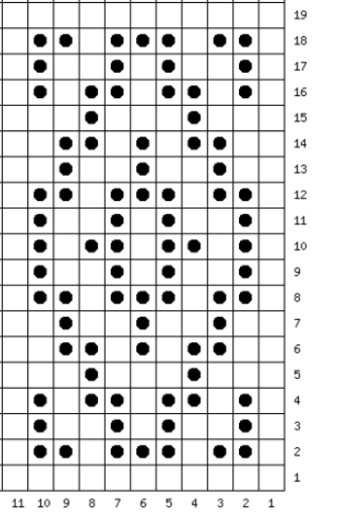

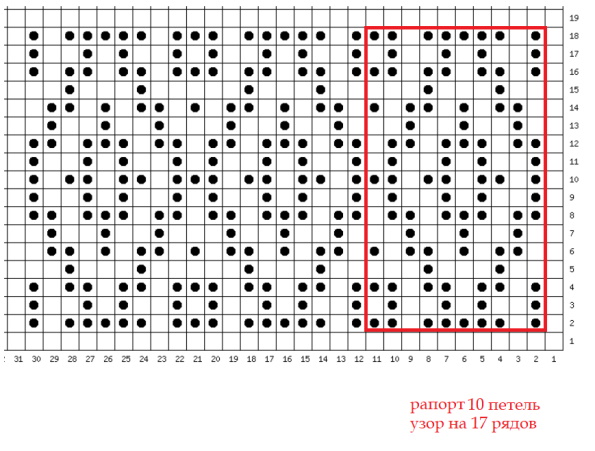

- Row 7 consists of *2 knit, 3 ch3a, knit* and knit elements.
- In the 8th row, knit, *knit, 3 dc in front and 2 knit stitches*.
- Rows 9, 13, 17, 21, 25 and 29 correspond to row 5.
- Rows 10, 14, 18, 22, 26 and 30 are done in the same way as row 6.
- Row 11 consists of *front, 2 СНАЗ, front, 2 СНАЗ* and front elements.
- In the 12th row, make a front loop, *2 SLIP FRONT, front loop, 2 SLIP FRONT and front loop again*.
- Row 15 consists of *front, СНАЗ, 3 front, СНАЗ* and front elements.

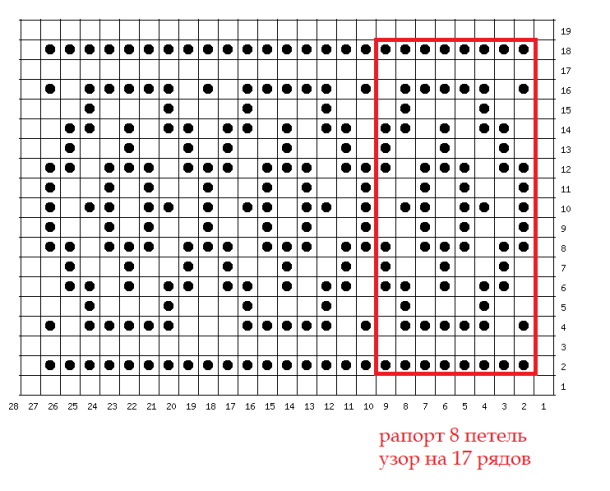
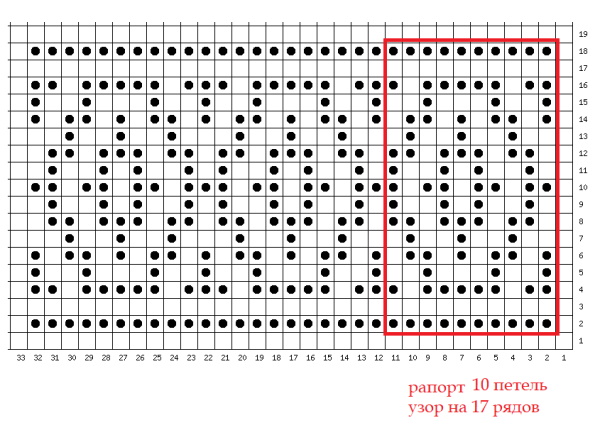
- Row 16 includes knit stitch, *SNAP FRONT, 3 knit stitches, SNAP FRONT and knit stitch*.
- In the 19th row, knit *SNZA, 5 front elements* and SNZA.
- Row 20 includes SNAP FRONT, *5 knit stitches and SNAP FRONT*.
- Row 23 consists of *2 SNZA, 3 front elements, SNZA* and SNZA again.
- In the 24th row, make SLFF, *SLFF, 3 knit stitches and 2 SLFF*.
- Row 27 consists of *front, 2 СНАЗ, front, 2 СНАЗ* and 1 front element.
- Row 28 consists of knit stitch, *2 dc front, knit stitch, 2 dc front and knit stitch*.
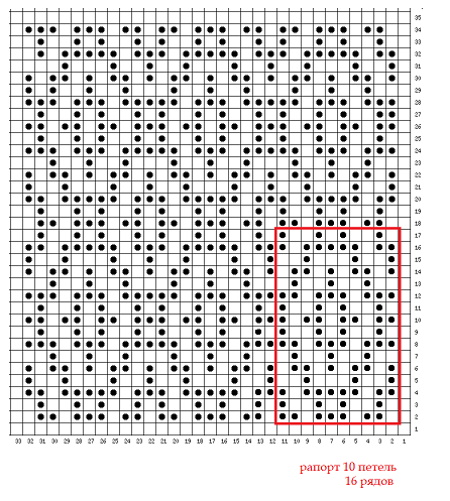
- In row 31, make *2 knits, SNZA, knit, SNZA, knit* and knit elements.
- Row 32 includes knit, *knit, SNAP FRONT, knit, SNAP FRONT and 2 knit stitches*.
In a circle
Knitting with lazy jacquard can be done in a circle. In order for the ornament to be clearly visible, it is recommended to use yarn of 2 different shades, for example, yellow and green. Yellow will be the main color, green - the finishing one. At the same time, knitting should not be weak.
Step-by-step description of knitting:
- The number of elements must be a multiple of 4. Change the shade of the thread material every 2 rows.
- Start working with the finishing tone.
- In the 1st row, knit 2 front elements. After 2 loops, remove, leaving the working yarn behind the fabric.
- Row 2 is done in the same way as row 1.
- Row 3 consists of 2 knit stitches and 2 slipped stitches. The working thread material should be behind the fabric.
- In the 4th row, all elements must be purl.
- In the 5th row, initially remove 2 elements. The working yarn should be behind the fabric. Then knit 2 front loops.
- Row 6 corresponds to line 5.
- In the 7th row, remove 2 loops, holding the working thread material behind the fabric. Then knit 2 front elements.
- Row 8 consists of purl stitches.
- Starting from row 9, repeat the pattern from row 1.
Secrets for Beginners
Secrets for Beginners:
- When changing the shade, you need to remember about the residual thread material. It is permissible to tighten the remaining thread at the back of the fabric. This will prevent the creation of extra loops.

- It is necessary to follow the diagram clearly so as not to get lost in the drawing. For these purposes, it is permissible to use backlighting or special markers to mark the areas where the shade needs to be changed.
- Before knitting the main fabric, it is recommended to make a sample with the full pattern rapport. This is because the knitting density may be different from that of regular stocking knitting.
- To avoid going to the wrong side, it is best to work the jacquard pattern in a circle. This will not cause seams to appear. This method is suitable for decorating mittens and socks.
There are many options for knitting beautiful and unique items. When looking for something special, it is worth paying attention to lazy jacquard. This method helps to create unusual patterns, while the technique and patterns will be simple.
Video about knitting
Lazy jacquard knitting:

La traduction du russe en français est littéralement incompréhensible, c'est vraiment vraiment regrettable…